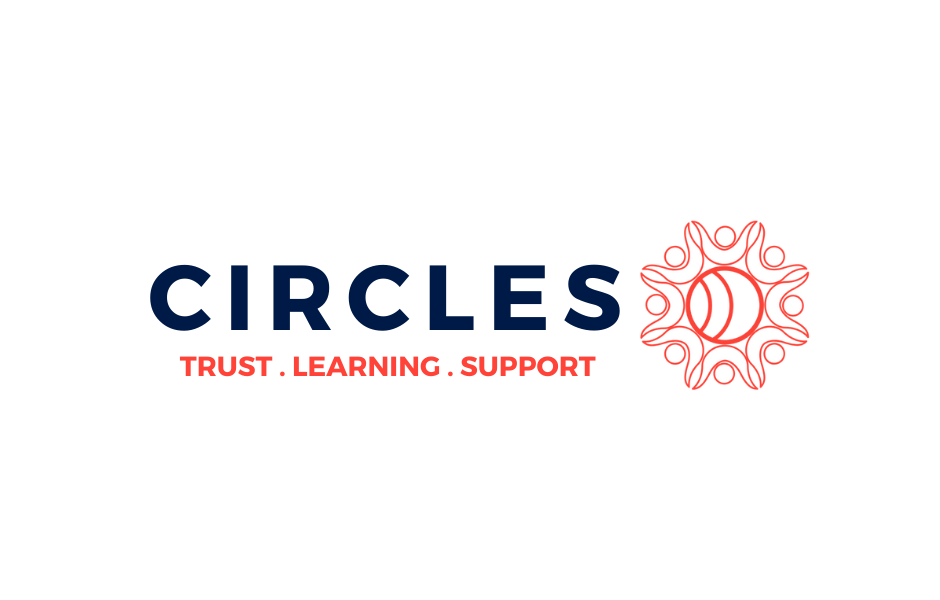
More Common Sense, Less Ideology: Modern Communications Lessons from the Critical Race Theory Debates
More Common Sense, Less Ideology: Modern Communications Lessons from the Critical Race Theory Debates
Nat Kendall-Taylor
CEO
FrameWorks Institute
@natkendallt
Being smart and “right” is getting in the way of moving hearts and minds towards positive social change.
The debate that unfolded across America last year surrounding Critical Race Theory clearly illustrates this problem. This debate, and other cultural lightning rods like it, aren’t just communications failures, they’re serious, existential threats for nonprofit and foundation leaders working towards social change, justice, and equity.
Instead of addressing people’s concerns and appealing to their aspirations, many leaders and communicators either got caught in the weeds talking about things most people don’t really care about (like the differences between Critical Race Theory and anti-racist education) or dismissed pushback as coming from ill-informed outliers, “…these people don’t even know what Critical Race Theory is…”
Speaking to what people are worried about resonates, while rhetorical quips and barbs make it seem like communicators don’t get the point, or worse, that they don’t care. Instead of defending the definition of Critical Race Theory, communicators could have pivoted to discussions about the importance of having an education system that prepares children for the world they will inherit, or of the role of having children realize their potential for the future prosperity of our country.

Protestors against critical race theory hold signs on Tuesday, June 22, 2021, before the FWISD board meeting in Fort Worth. (Juan Figueroa/The Dallas Morning News)
As a social scientist focused on how communications can help create change, I see both reasons for alarm and lessons to be learned from the latest battle in the increasingly volatile culture war between liberal and conservative Americans over what values, ideals, and beliefs will guide our culture and inform our policies.
This culture war dates back to at least the 1960’s and has centered on a set of hot-button issues that polarize society by activating political identities and differences. Until it ignited airwaves and social media sites in 2021, Critical Race Theory was largely an academic theory confined to college classrooms and dissertations. The theory posits that racism is built into American legal structures and institutions and analyzes how this extends opportunities to some while closing them off to others.
In 2021, conservative cultural and political leaders seized on this previously obscure framework, focusing on how discussions of racism and privilege in public school curriculum were creating stress and anxiety for white children. Critical Race Theory was presented as another way the government was intruding on the rights of parents and families to raise their children. This pivot between Critical Race Theory and the loss of parental rights was a hallmark of the conservative strategy in the debate. Those on the left focused on whether Critical Race Theory was actually being taught in classrooms and what distinguished it from other anti-racist perspectives and approaches.
How we say things affects what people think, feel, and do
By applying findings from communication science, along with some good old fashioned message discipline, the debate could have gone differently. Fifty years of social science research–and communications practice–shows clearly and convincingly that how we say what we have to say affects what people think, how they feel, and what they do as a result. In short, framing matters. Opportunities abounded in the Critical Race Theory discussion to talk about things people care about: the importance of creating an education system that gives all children the opportunity to thrive, that balances safety with ongoing learning, and that helps us move forward – after this pandemic and more generally.
Emotions and ideas always win over definitions, and fear is real – it must be addressed. If things are to improve, we need leaders to understand why they’re failing as communicators – and to change their tune. We need them to commit to seeking out and understanding opposing views and positions–why are so many people worried about their children’s future and their loss of control—and engage rather than dismiss or ridicule them. We need them to commit to being persuasive and aspirational, addressing people’s concerns by appealing to the way the education system could work, rather than just being the smartest person in the room about what is wrong with it. We need them to use language that brings more people in by appealing to shared values like fairness, justice, and human potential, rather than setting wedges with arguments about how misinformed people are.
Critical Race Theory will not be the last culture war flash point. There are three core communication lessons that foundation and nonprofit leaders need to take on board so that the next debate doesn’t end the way this one did.
Social analysis is not communications analysis
White people in this country experience advantages that people of color do not. This is a fact. But we should not confuse this social analysis with its effectiveness as a communications strategy. When leaders call out white supremacy, they fail to engage a wide swath of people in discussions of reparations, police reform, and other equity-advancing policies. This doesn’t mean avoiding talking about racism, its history, current effects, and required solutions. Research has shown powerfully that when these ideas are first, front, and center they improve the effectiveness of messages—across political groups. But when leaders attack those who feel their standing threatened, they don’t build support for the solutions required to create an inclusive society.
#DefundThePolice is an instructive example. The main thrust – that the current system of policing creates conditions that endanger people of color — resonates with most people, but the framing needs a comprehensive overhaul. Commitment to this specific slogan has proven unproductive – particularly for Black people, who disagree with both the language and the idea of abolishing police. The communications analysis tells us we need a way into this discussion that doesn’t ask us to abolish the police or have fewer resources devoted to public safety. We can’t allow our leaders to avoid discussions of racism, but we do need them to do this in a way that brings along those who need to be persuaded.
The use of the term “Latinx” is another example. The social analysis is right on—Latinx is designed to simultaneously avoid using a term to refer to people from Latin America with the Spanish who colonized the region (Hispanic) and applying the male “o” suffix (Latino) to people of all genders. But 98% of Latinos do not like the term, do not appreciate being referred to as Latinx, and, in some cases, resent those who use it. Right idea, wrong packaging.
Our recent work with Leading For Kids to advance the rights and opportunities of young people in the United States through the use of alternative narratives presents another example of this challenge. While many children in this country are vulnerable–they face risks and adversity that threaten positive development and outcomes–the use of “vulnerability” as a communications strategy, backfires. Framing the conversation in terms of vulnerability invites people to otherize and evaluate the deservingness of the very children and families that require support. It also depresses support for policy solutions by activating a sense that children experiencing adversity are ‘damaged goods’ and thus beyond help. Again, right idea, wrong packing.
You need to connect
Across issues, effective communicators have been able to frame the discussion around ideas that connect with things that matter to many, if not most Americans. And these communicators are happy when others get stuck in the basement of culture wars (citing statistics about the safety of pediatric vaccines) while they trade in big, culturally resonant ideas (loss of control over a parent’s decision to do what they see is right for their kid).
And that’s where foundation and nonprofit communicators and leaders need to evolve. Unless leaders connect with frames and messages that resonate and move people, they will never win support for their ideas and initiatives. Departing Heinz Endowments President Grant Oliphant recognized this and shared the solution during his keynote at ComNet17 in Miami, “We know storytelling is effective. We know the way you get to a good story is actually by…listening…actually spending time bearing witness to the lives of people that you want to help.” Philosopher Richard Rorty echoes Oliphant’s argument that pragmatism and common sense are the pillars of effective communication, “A talent for speaking differently, rather than arguing well, is the chief instrument of cultural change.”
Using values to cut through and show why an issue matters is a pillar of strategic communications–think of the role of hope in the 2008 Obama campaign, or love in the fight for marriage equality. But again and again it’s a lesson that gets forgotten in the heat of a culture war battle. As long as communicators keep arguing at the edges, they miss the point. Next time let’s talk about how racism keeps us all from moving forward, in the way that Heather McGhee writes about, rather than getting lured into a semantic debate.
We’ve seen the power of connecting with values across the issues that we’ve worked on, from climate change (“science says” doesn’t do the trick whereas stewardship and future legacy do) to addiction (where interdependence pulls people into the issue and moves them to get behind progressive solutions).
Dismiss ideas as “fringe” at your own peril
Many progressive leaders were lulled into thinking that sentiments activated by anti-Critical Race Theory discourse were restricted to a narrow strip of the far right and a few cable news talking heads. Wrong. Frustrations with how social justice ideas are entering public education and fears of the government moving into parents’ domain are real and widely held. When leaders discount such sentiments and write them off as fringe or folly, they make a grave mistake. Progressive leaders and communicators would do better to understand them and, imagine this, engage them. Understanding does not mean condoning. But if communicators continue to respond to opposing views with willful silence or acerbic rebuke, they cede ground, miss opportunities to connect, and make themselves increasingly irrelevant.
Connecting with the concerns of a wide range of people and bringing them in has been a successful strategy for everyone from death penalty abolitionists to early childhood development advocates.
As the cultural wars rage on, foundation and nonprofit leaders and communicators need to realize that while it might be the fringe that forges words into weapons, they’re tapping into widely held anxieties and fears – with a big bullhorn. Understanding and engaging people is the only way forward.
Upcoming events
Join New England communications professionals for a virtual spring gathering!
The Communications Network CEO Sean Gibbons will join us to share highlights and findings from ComNet’s recent Pulse Poll, which surveyed the field about how communications leaders are navigating shifts resulting from the new federal administration.
Join Circles, communities of practice for Network members to connect with colleagues based on the role you play, or issue/topic your organization focuses on or your shared identities.
This webinar will introduce audience members to the Health Equity Narrative House, a tool meant to support the storytelling and organizing that advances a vision of a more just and equitable society.




